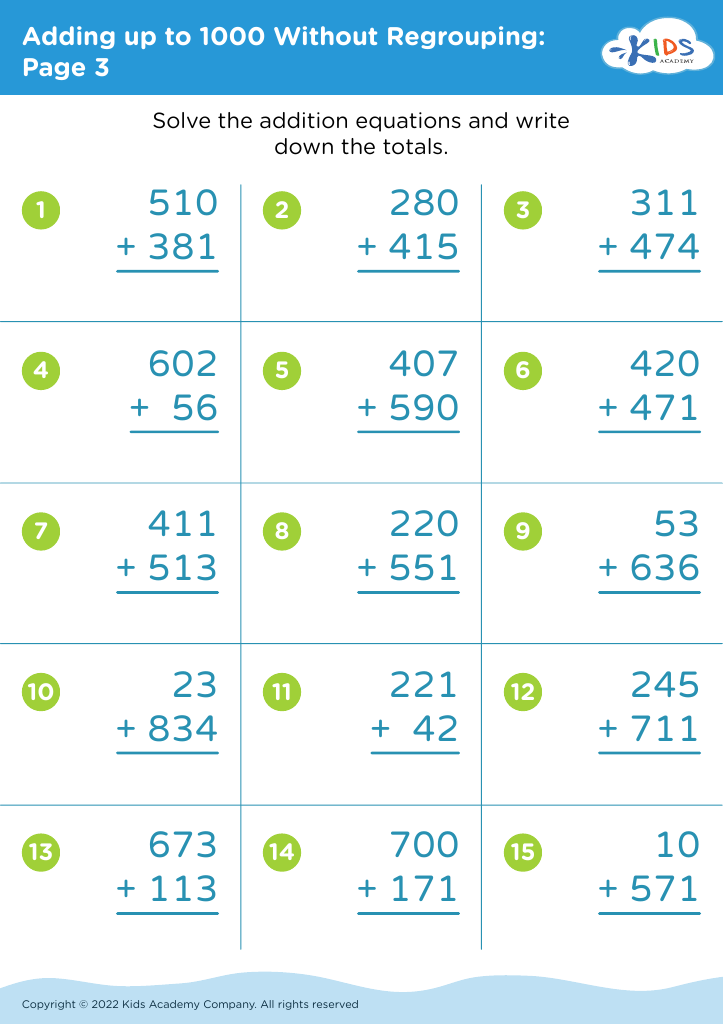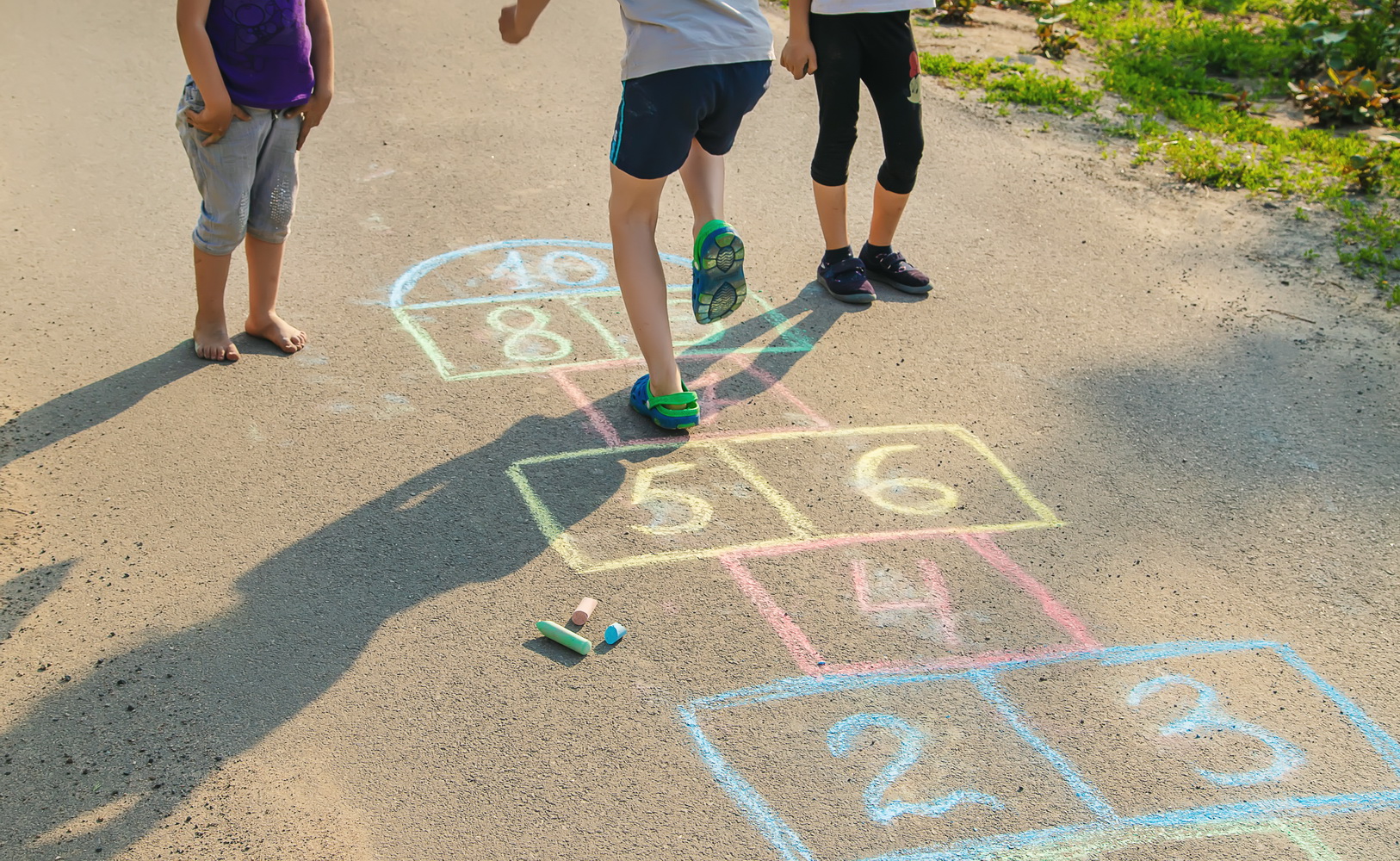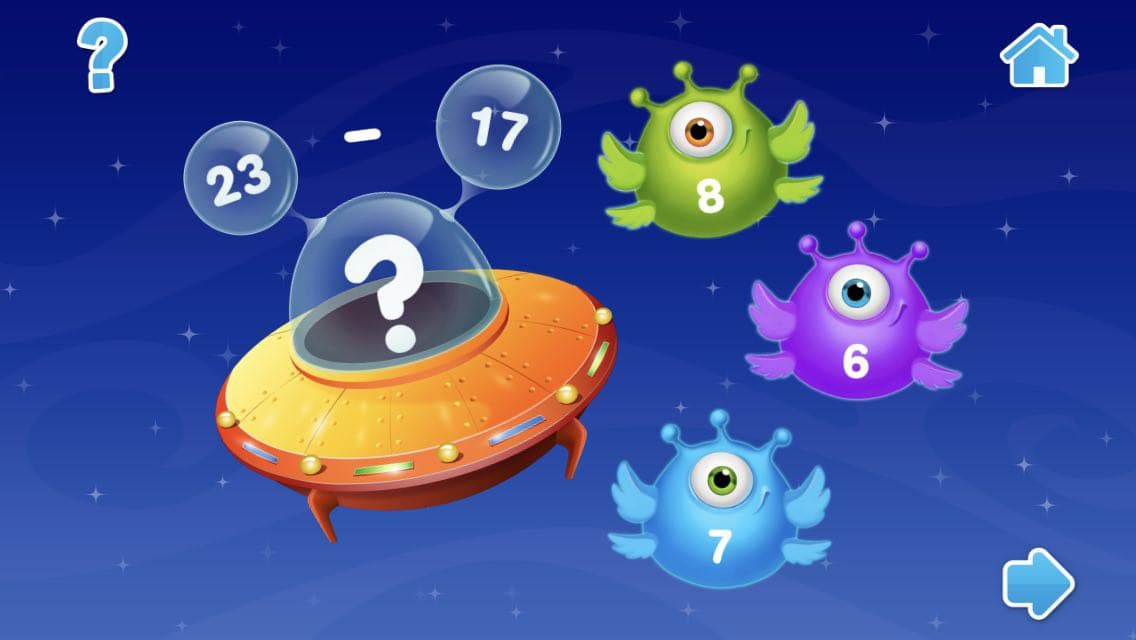Understand patterns Addition Worksheets for Ages 6-7
6 filtered results
-
From - To
Enhance your child's math skills with our "Understand Patterns Addition Worksheets" designed specifically for ages 6-7! These engaging worksheets aim to help young learners recognize and work with numerical patterns, essential for mastering addition. Each worksheet combines fun illustrations and interactive exercises, making math enjoyable and effective. By focusing on patterns, children will develop critical thinking skills while reinforcing their addition knowledge in a playful way. Help your child build a solid foundation in math and gain confidence in their abilities. Explore our collection of thoughtfully crafted worksheets that promote learning through discovery and creativity today!
Understanding patterns in addition is crucial for children aged 6-7 as it forms a foundational skill that supports their overall mathematical development. At this stage, children begin to recognize and learn mathematical concepts that are critical for more advanced arithmetic operations. Identifying patterns helps them grasp the concept of addition as more than just rote memorization; they start to see relationships between numbers, which enhances their problem-solving skills.
For parents and teachers, fostering an understanding of patterns in addition equips children with strategies to simplify calculations. For example, teaching the concept of "making ten" helps children quickly solve problems involving larger numbers. This not only boosts their confidence but also engages them in numerical exploration, making math more enjoyable and less intimidating.
Moreover, this skill assists in developing critical thinking and analytical skills, as children learn to predict outcomes and solve problems logically. Additionally, recognizing patterns is a key component of broader mathematical concepts, including multiplication and division, making it easier for children to transition smoothly to these topics in later grades. Thus, focusing on pattern recognition in addition supports both immediate understanding and long-term success in mathematics.



























